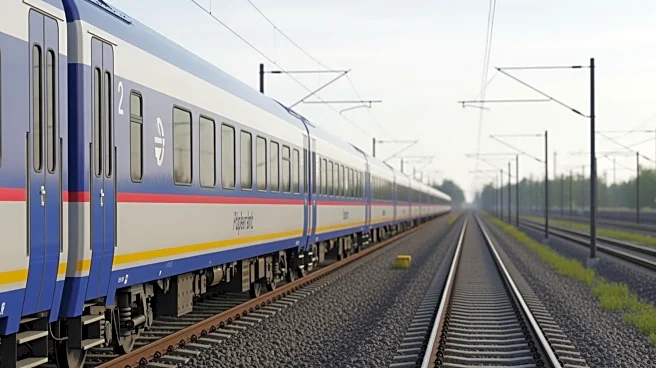What's Happening?
The Northumberland Line, running between Ashington and Newcastle, is set to receive extra carriages for peak-time services due to unexpectedly high demand. Since reopening last December, the line has facilitated
over 700,000 passenger journeys. The busiest times coincide with Newcastle United home fixtures, drawing fans from south-east Northumberland. The county council has deemed the line a 'phenomenal success,' with further demand anticipated as Blyth Bebside's station opens. Train operator Northern is addressing capacity issues despite a nationwide shortage of suitable carriages. Two additional stations, Bedlington and Northumberland Park, are scheduled to open next year, supported by a £37.9m investment from the county council, government, and North East Combined Authority.
Why It's Important?
The expansion of the Northumberland Line is crucial for regional connectivity and economic development. Increased capacity addresses commuter needs and supports local tourism, particularly during major events like football matches. The investment in infrastructure reflects a commitment to enhancing public transportation, which can reduce road congestion and environmental impact. The success of the line may encourage further extensions, potentially revitalizing areas affected by past rail network cuts. The collaboration between government entities highlights the importance of strategic planning in transportation projects.
What's Next?
The opening of new stations and continued monitoring of service capacity will be key to accommodating growing demand. Stakeholders, including local businesses and residents, may benefit from improved access and increased foot traffic. The potential extension of the line to towns like Newbiggin-by-the-Sea could further enhance regional connectivity. Addressing the carriage shortage will require coordination with national rail authorities to ensure sufficient resources are available.
Beyond the Headlines
The Northumberland Line's success may influence future transportation policies, emphasizing the need for sustainable and efficient public transit solutions. The project highlights the role of infrastructure in regional development, potentially attracting investment and boosting local economies. The line's expansion could serve as a model for other regions seeking to revitalize their rail networks.












